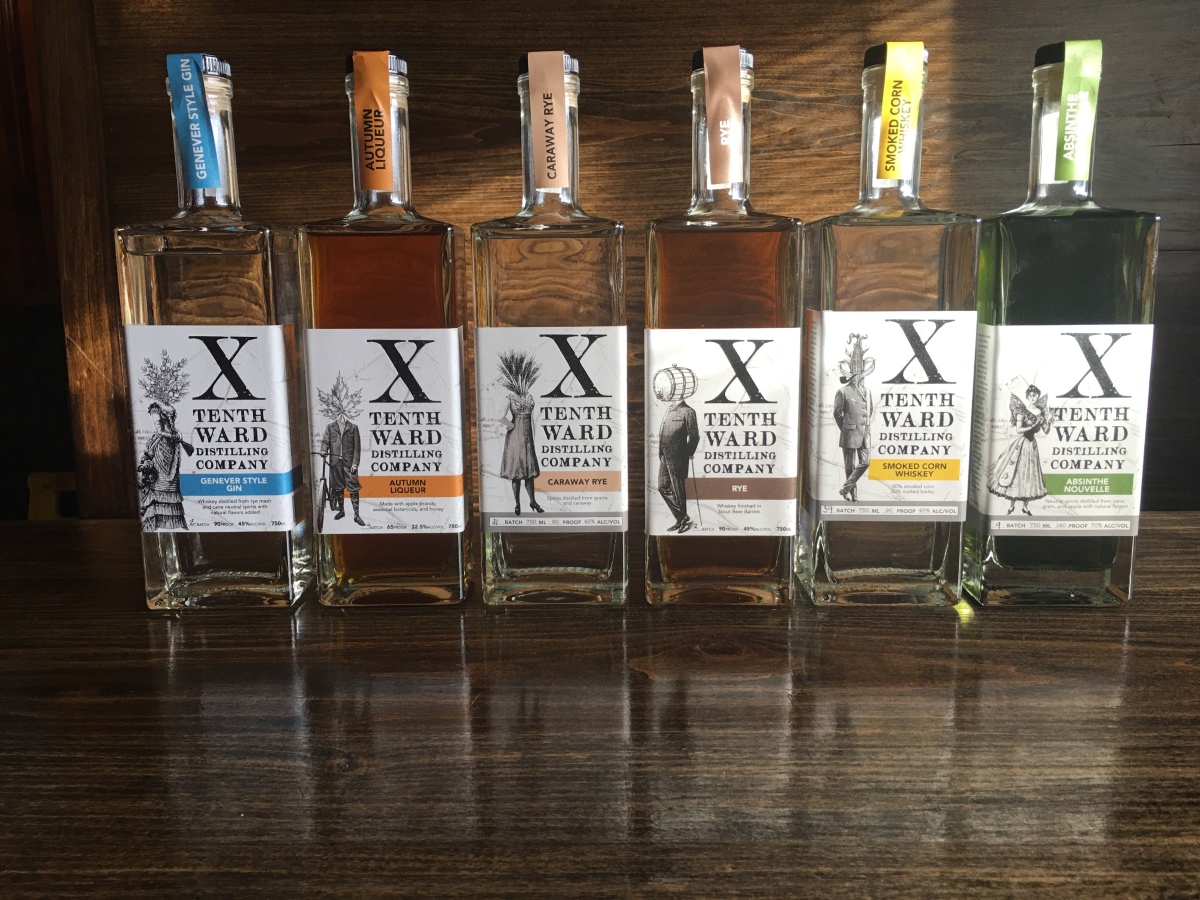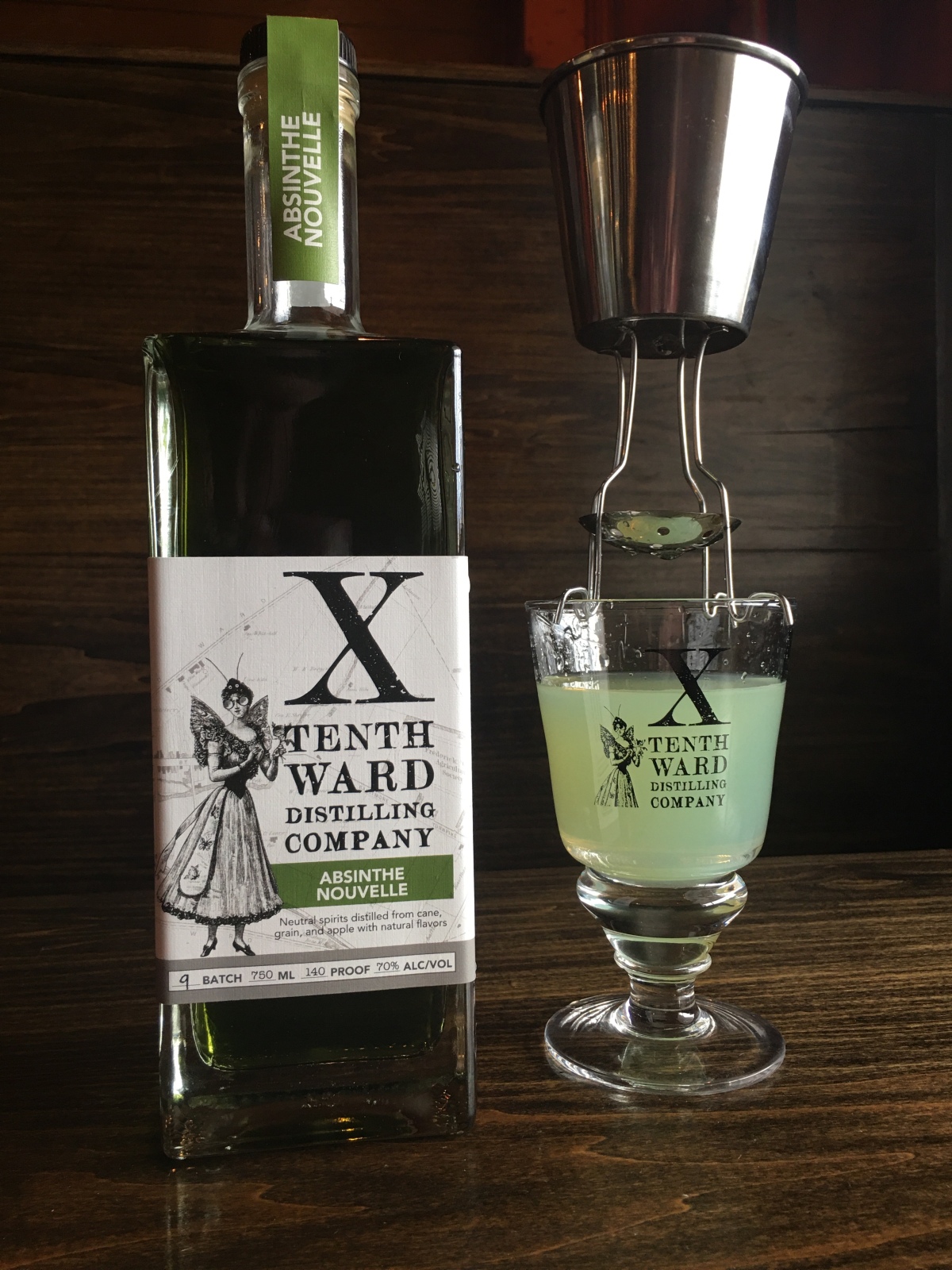Ward Off Ordinary
We are pleased to introduce Tenth Ward Distilling Company, a woman owned micro-distillery located in the heart of downtown Frederick, Maryland.
Specializing in whiskey, brandy, seasonal liqueurs and absinthe, Tenth Ward challenges the traditional style of distillation while making products with flavor profiles that are influenced by local ingredients.
The name “Tenth Ward” is a reference to the way Frederick City was divided during the late 19th century. The distillery is located in what used to be considered the Tenth Ward.
GENEVER STYLE GIN

Distilled from a base of malted rye, malted barley, and cane spirit then vapor infused with juniper, angelica root, orris root, cardamom, elder flower, ginger root, persimmon, chicory root and orange peel.
A nice hit of juniper on the front that transitions into subtle earthy notes with a burst of citrus. Finishes with uncompromising notes of malt, rye and chicory.
CARAWAY RYE

A mash bill of malted rye, malted barley, and you won’t believe it… caraway seed!
A mouthful of aquavit-like notes, malty tones, pops of chocolate, anise, and stone fruit
STOUTED RYE

Our 70% rye, 30% barley mash bill, aged in brand new No. 4 charred American White Oak and then finished in Flying Dog Gonzo Imperial Porter Barrels.
Jammy notes of plum and chocolaty malt. Brief boom of pepper in the center. Finished dry and malty.
SMOKED CORN WHISKEY

SMOKED CORN, MALTED BARLEY. ‘Nuff said.
Mezcal and scotch like notes, butter, sweet corn, and then a packed punch of smoke, campfire and wood on the finish
ABSINTHE NOUVELLE

THIS IS MARYLAND’S FIRST ABSINTHE! Distilled with the absinthe “holy trinity” of wormwood, anise, and fennel. All that emerald and natural green comes from small wormwood, hyssop, and lemon balm.
A punch of rich licorice, complex herbal notes, and floral fairy dust.
To learn more about absinthe read Chasing the Green Fairy, Absnithe Demystified.
AUTUMN LIQUEUR

Tenth Ward’s original apple brandy is melded with ginger, plum, black tea, turmeric, allspice, cinchona bark, sage, fennel, saffron, and honey.
A smack of dry champagne, bourbon-like innuendos and whispers of tart apple.
SUSTAINABILITY
Tenth Ward is committed to keeping a minimal environmental footprint and sourcing everything as local as possible.
Grain– All of the grain used in Tenth Ward spirits is grown, malted and sometimes smoked by local farmer Rusty at Ripon Lodge Farm out of Rippon, WV.
Cider– Tenth Ward ferments and distills their apple brandy (the base for Applejack and seasonal liqueurs) using cider from their neighbors right down the road in Frederick, MD at McCutcheon’s Apple Products.
Honey– Tenth Ward also uses honey from Hay’s Apiary in Smithsburg, MD, to sweeten their seasonal liqueurs.






